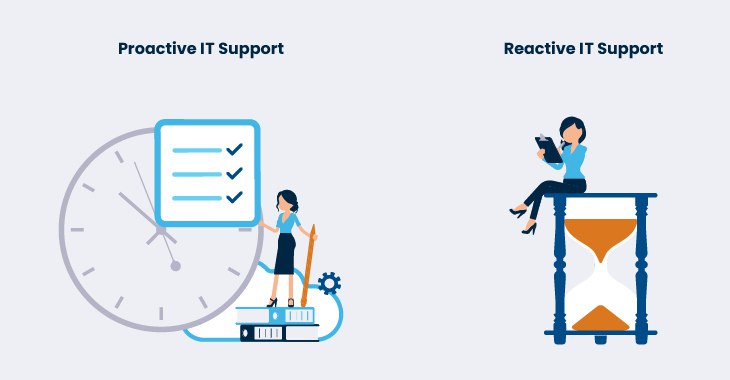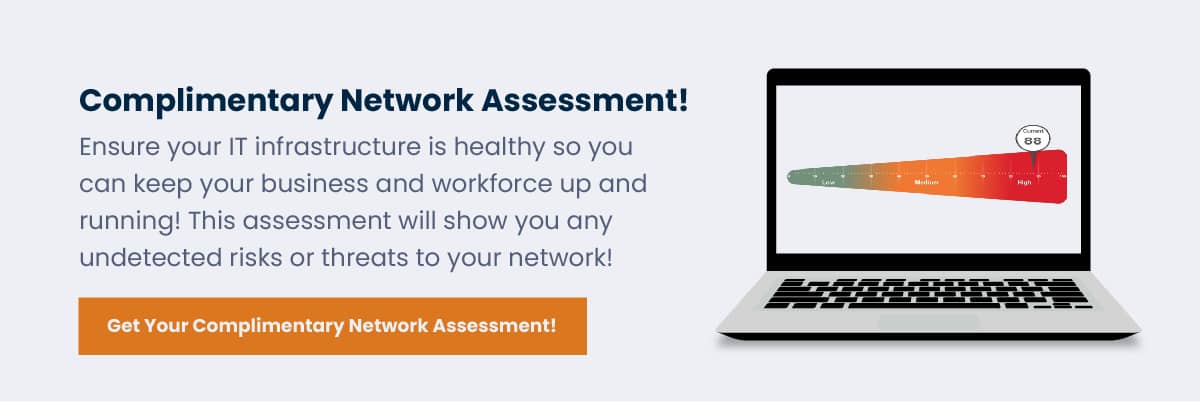Is It Worth It To Invest In Managed IT Services? (4 Financial Benefits)
Managed IT | Managed IT Services | Network Infrastructure | Network Security & Cybersecurity
No matter how you spin it, maintaining and managing an office IT environment costs money. But if you’re considering getting assistance from a managed IT provider, it’s normal to wonder, “Is it worth the financial investment?”
When it comes to managed IT, there are several benefits that can save you money long-term.
In many ways, managed IT supports organizations in making sure that the right resources and people are utilized in the best possible ways. This, in turn, provides financial benefits to their business.
As a managed service provider, At LDI, we talk with plenty of businesses who aren’t sure if working with an MSP is the right choice for them, questioning whether it’s worth the financial investment. For the dozens of clients we work with, the financial investment is well worth it, mostly in 4 main ways.
In this article, we’ll dive into those main benefits here so that you can determine whether these benefits would outweigh the costs for your organization. By the end of this article, you will have a better idea if managed IT services are worth your business’s financial investment.
What Are The 4 Financial Benefits of Managed IT Services?
The goal of managed IT services is for a third-party organization or managed IT provider to maintain, manage, and support your IT environment.
Managed IT can support enhancing customer satisfaction, optimizing the use of existing resources, and investing in affordable new resources as well.
Here are four financial benefits that Managed IT providers offer to organizations:
1. Immediate Proactive & Reactive Support
For $10 to $100 per device or $100 to $150 per user per month, your business can receive both proactive and reactive IT services from a team of specialists monitoring your environment.

Think about it. Rather than spending money hiring a salaried IT employee, you can rely on the help of a team of specialists dedicated to supporting your IT network.
The level of support your managed IT provider offers should be highlighted at the very beginning. Proactive and reactive support is essential to protecting your environment from catastrophic cybersecurity events.
Let’s dive into both.
Proactive IT Support
By proactive IT support, we’re talking about the kind of support that ensures your environment is secure and has a solid game plan should a data breach ever occur.
Creating a cybersecurity plan and implementing malware protection software and endpoint detection and response software are excellent examples of proactive It support. Why?
Well, a cybersecurity plan ensures that your business and the managed IT provider has a solid game plan should a data breach ever occur. Think of malware protection software and endpoint detection and response software as a line of defense meant to remediate risks before they become a problem.
Additionally, a managed IT provider will deploy remote monitoring and management (RMM) software to supervise your network at all times closely. RMM software can help providers keep an eye on both internal and external suspicious activity as it enters your network.
Reactive IT Support
By reactive IT support, we mean how your managed IT provider responds to an IT issue, as well as plans for a data breach once it has infiltrated your network.
Managed IT services should be responsive and knowledgeable enough not just to put a bandaid on an IT issue but to fix the problem in its entirety.
Depending on the SLA you sign with a managed IT provider, every provider abides by different response times depending on how critical the IT issue is. When acquiring managed IT services, make sure that the response times align with your business needs.
A Managed IT Provider can help create a business continuity and disaster recovery plan with your organization. Both a BCP and a DRP help your business once a cyberattack occurs.
Cybersecurity attacks can end up costing your business a large sum of money. Not only from the ransom demanded by the cyber attackers but from the downtime of not having your business up and running.
Having a solid plan in place with the help of a team of IT experts is essential in ensuring your organization is secure.
2. Extend The Life Of Your IT Equipment
By receiving managed IT services, your business will be able to prolong the life of its current equipment.

Now, if most of your IT equipment is held together with tape, then perhaps your business requires new IT equipment.
However, a trusted managed IT provider will help you get more time out of your current IT assets. How?
A provider can implement proactive IT measures to extend the life of your equipment.
One IT measure, in particular, includes running targeted upgrades. For example, a provider can install an SSD hard drive which can make your system run faster.
So instead of throwing out usable IT equipment, a managed IT provider will optimize what you have to get the most out of your investment.
3. Reduce Infrastructure Expenses
Receiving managed IT services can reduce infrastructure expenses in several ways. With the help of a managed IT provider, your business will receive optimization tactics to enhance your current IT environment.

A managed IT provider can right-size or optimize the number of devices you have on-site by helping you swap out or get rid of unusable hardware.
Now, if your business is currently operating its own on-premises data center, a managed IT provider can also help you make a transition to the cloud where your data will be hosted by them or an all-in-one platform such as Microsoft 365.
This transition will help your business save on the cost of the hardware and the energy it consumes.
In addition, your business can see savings as they pertain to licensing, training, and consulting. Instead, Managed IT is a monthly investment that involves expert support, monitoring, management, and software implementation.
4. Build Trust With A Team Of Specialists
Think of a managed IT provider as a trusted advisor for all of your IT needs.
Trust is the backbone of any long-standing relationship.

Having a trusting managed IT provider will save you a lot of money that you would otherwise spend on one-off solutions the moment you need help with your IT equipment.
Think of it this way, when you outsource every one of your IT needs, you often don’t know the person working with your sensitive data or IT equipment. Instead, you’ll be working with an IT outsourcing company that needs to be updated on what is going wrong with your IT environment.
However, a managed IT provider plays an active role in monitoring your IT infrastructure and can remedy an IT issue that much faster because they have a good understanding of your IT environment.
A managed IT provider acts as an extension of your company and should only recommend solutions for the sake of your business requiring them and not just to make a sale.
For example, when you’re experiencing a car malfunction, going to a mechanic that you barely know can seem overwhelming and just downright worrisome.
But suppose you have a long-standing relationship with this mechanic and their shop. In that case, you are more than likely to trust their recommendations and know they have your best interests at heart.
Your organization should not be sold a bill of goods to line the managed IT provider’s pockets. Every IT solution should have your business’s best interests at heart.
Is Managed IT Worth The Financial Investment With Your Business?
Regardless of whether your business is small or large, Managed IT can offer several cost-effective benefits.
For each of the benefits outlined above, consider the impact Managed IT can have on your business’s daily work and bottom line.
By receiving Managed IT, your business will have consistent monthly costs, immediate proactive and reactive IT support, along with the added assistance of implementing the proper infrastructure for your business’s needs.
To learn more about what Managed IT can do for your business, contact an LDI specialist today.
